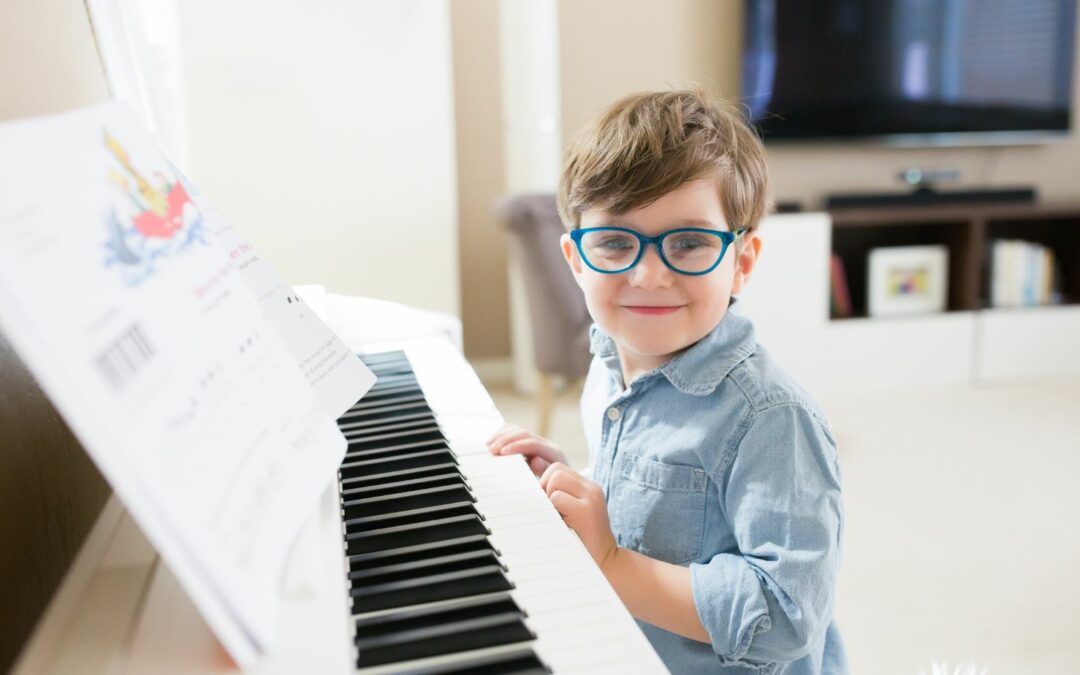Piano for Toddlers
Are you looking to introduce your toddler to the wonderful world of music? Look no further than piano lessons! Piano for toddlers is a fantastic way to ignite their interest in music and foster early development. From improving hand-eye coordination to enhancing cognitive skills, playing the piano offers a multitude of benefits for young children.
One of the great advantages of introducing piano at an early age is that it helps toddlers develop fine motor skills. As they press the keys, their fingers gain strength and dexterity, which can later translate into better handwriting and overall coordination. Additionally, learning to read musical notes stimulates their brain’s neural connections, boosting memory and concentration abilities.
But don’t worry if your little one has never touched a piano before! Piano lessons for toddlers are designed with their specific needs in mind. With fun and engaging activities tailored to their attention span, these lessons make learning an enjoyable experience.
Essential Features to Look for in a Toddler-Friendly Piano
When it comes to finding the perfect piano for toddlers, there are several essential features that parents should look out for. These features not only enhance their musical experience but also ensure their safety and durability. Let’s explore some key aspects to consider when choosing a toddler-friendly piano.
Attractive Design and Colors
One of the first things that catches a toddler’s attention is the appearance of a piano. Opting for a piano with an attractive design and vibrant colors can make learning more engaging for your little one. Look for pianos that come in various appealing shapes, sizes, and patterns that will captivate their imagination.
For instance, some models feature adorable animal-shaped keys or colorful buttons with different animal sounds, adding an element of fun and creativity to the playing experience. By selecting a visually appealing instrument, you’ll not only foster your child’s interest in music but also create an inviting environment for them to explore and learn.
Interactive Features for Engagement
To keep toddlers engaged during their piano lessons or playtime sessions, it’s crucial to choose an instrument with interactive features. Many toddler-friendly pianos come equipped with built-in games, sound effects, pre-recorded melodies, and even lights that respond to touch.
These interactive elements help stimulate your child’s senses while making learning enjoyable. They can experiment with different sounds and rhythms while developing hand-eye coordination and fine motor skills. Additionally, some pianos offer modes that guide beginners through simple songs or provide feedback on correct finger placement — these assistive features can be particularly helpful for young learners.
Safety Measures and Durability
Since toddlers are naturally curious explorers, it’s important to prioritize safety when selecting a piano for them. Look for instruments made from non-toxic materials without any small parts that could pose choking hazards. Rounded edges or cushioned corners are additional safety measures worth considering.
Furthermore, durability is key when it comes to a toddler-friendly piano. Opt for instruments made with sturdy materials that can withstand the energetic play of young children. Pianos with reinforced keys and a solid construction will ensure longevity, allowing your child to enjoy their musical journey for years to come.

Tips for Teaching Toddlers to Play Piano
- Start with a child-sized instrument: It’s important to provide your toddler with a piano or keyboard that is suitable for their size. Look for mini keyboards or pianos designed specifically for young children.
- Keep it fun and interactive: Toddlers have short attention spans, so make sure to keep the lessons engaging and interactive. Incorporate games, songs, and colorful visuals to capture their interest.
- Introduce basic concepts gradually: Begin by teaching your toddler about the different keys on the piano and their corresponding sounds. Start with simple melodies and gradually introduce more complex tunes as they progress.
- Use visual aids: Visual aids such as colored stickers or charts can help toddlers associate specific keys with certain notes or sounds. This can make it easier for them to understand and remember musical patterns.
- Encourage creativity: Allow your toddler to experiment and explore different sounds on the piano. Encourage them to create their own melodies and express themselves through music.
- Be patient and supportive: Learning any new skill takes time, especially for toddlers. Be patient with your little one’s progress and provide lots of encouragement along the way.
- Keep practice sessions short: Toddlers have limited attention spans, so it’s best to keep practice sessions short but frequent.
Remember, every child learns at their own pace, so don’t push your toddler too hard or expect immediate results. The goal is to foster a love for music and cultivate their interest in playing the piano in a fun and enjoyable way.
An Occupational therapist, freelance content writer and more importantly a stay-at-home mom, Sara, like all other parents juggles her many roles. Her passion for writing combined with her professional expertise as an Occupational therapist (working with children with special needs) has helped her craft content specific to child health, wellness and learning skills. At present, Sara alternates her time between raising her two young children, and writing about what she knows best- children!





